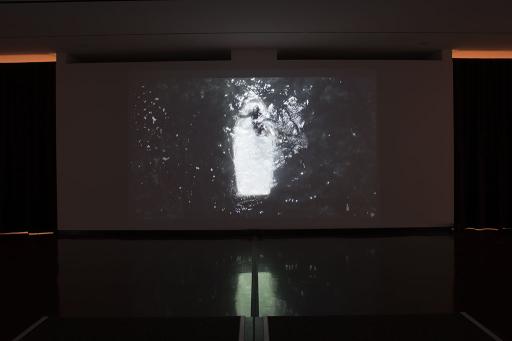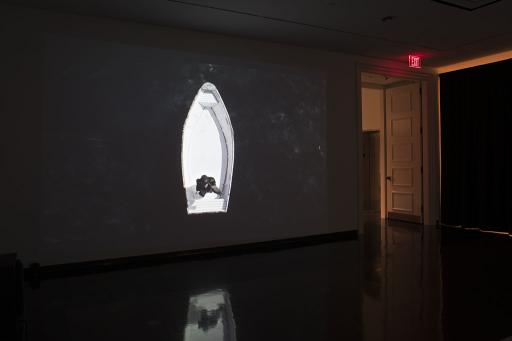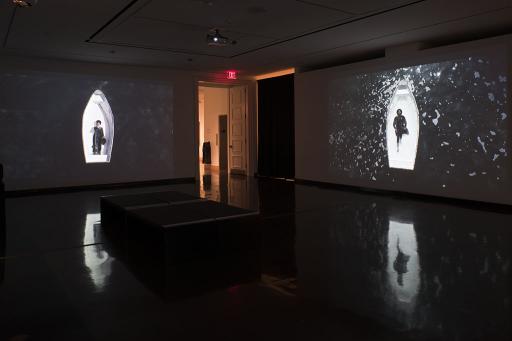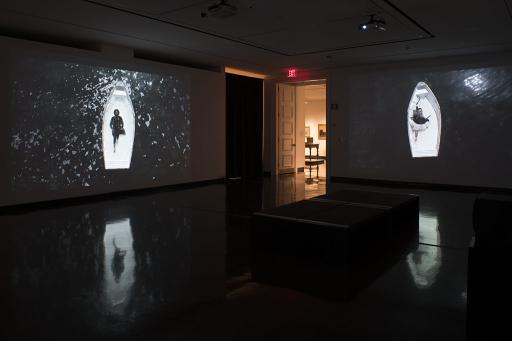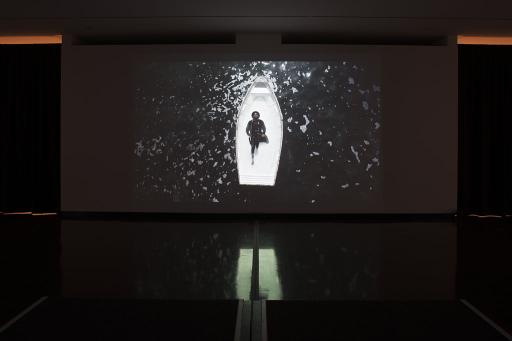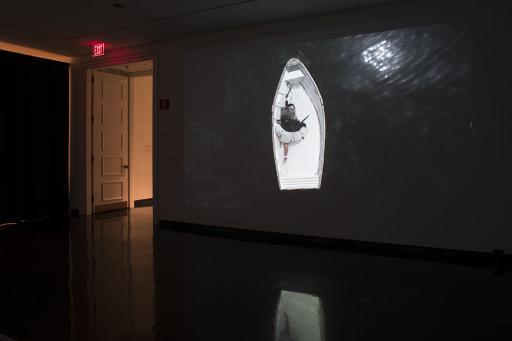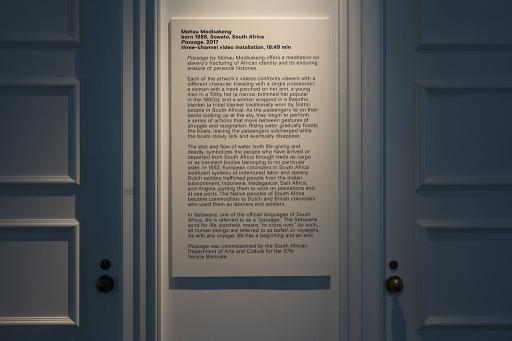Passage
Exhibition Overview
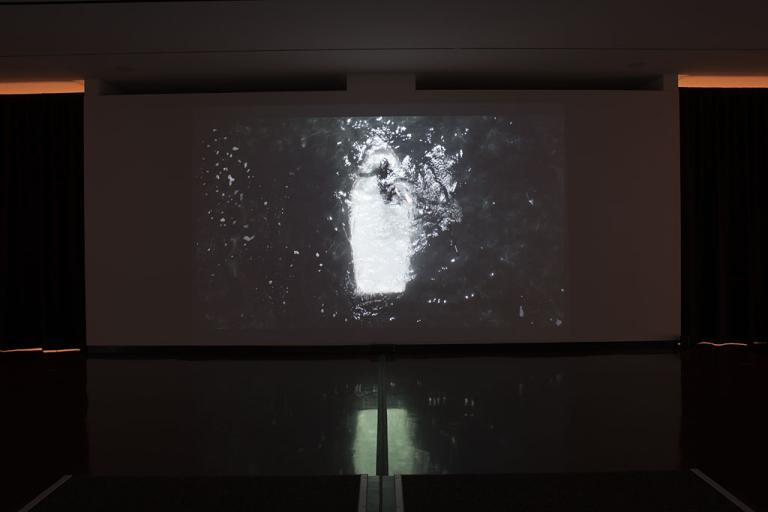
Presented by the Spencer’s Integrated Arts Research Initiative, Passage by Mohau Modiskeng is a three-channel video installation that mediates on slavery’s dismemberment of African identity and its enduring erasure of personal histories. The work was commissioned by the South African Department of Arts and Culture on the occasion of the 57th Venice Biennale.
